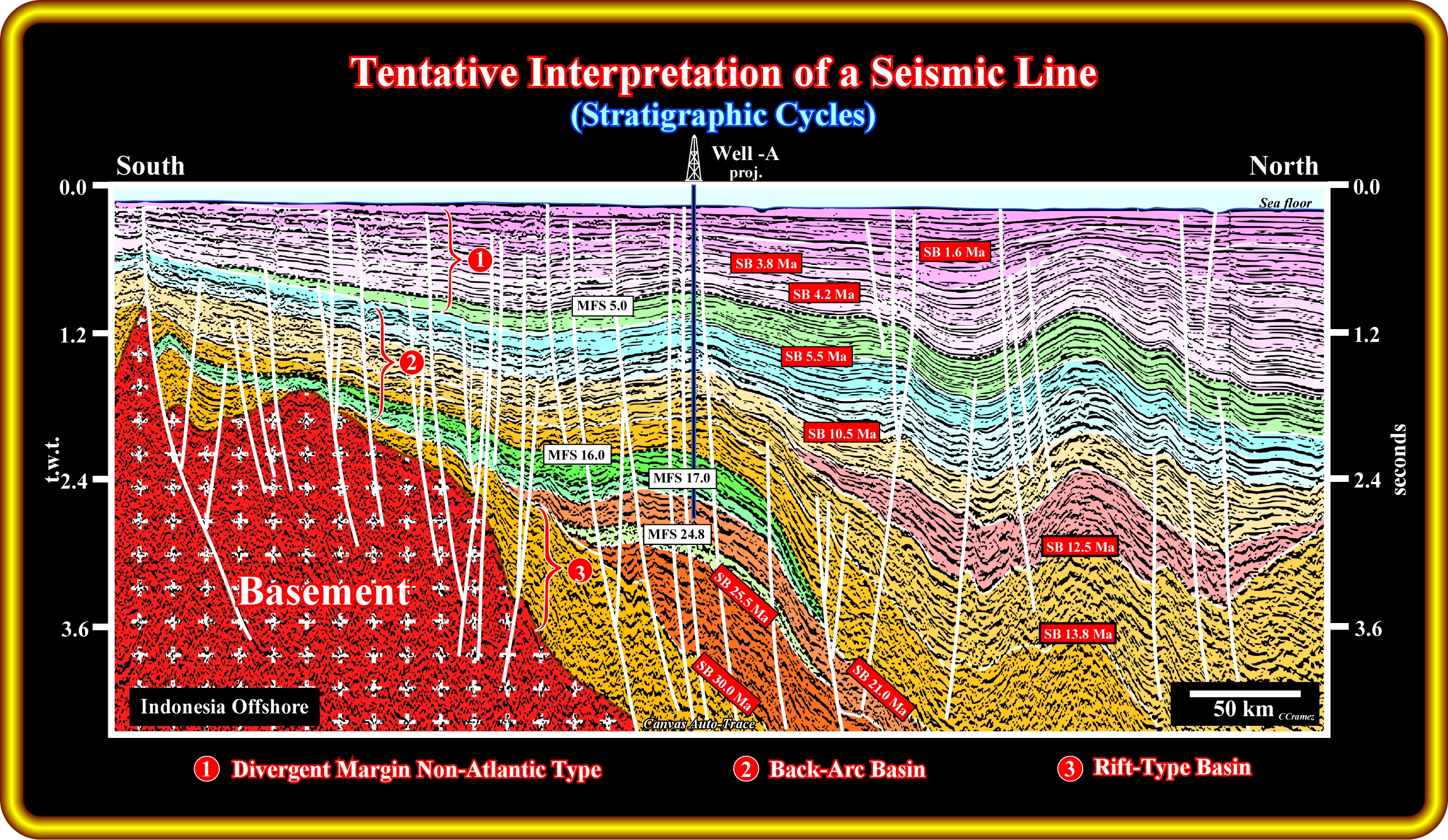

This is the Home Page of the short-course on Seismic Sequential Stratigraphy, prepared for geoscientists workin in oil companies. The short-course is mainly based on Peter Vail's courses (Rice University, Houston, Tx, USA) and on those I gave at Total SA and other oil companies.
If you click on the hyperlinks (underlined text and bots), you can navigate and find the majority of the plates and comments using during this week short-course.

In this critical tentative interpretation of an Indonesia offshore seismic line, the interpreter (geoscientist and not necessarily a geophysicist) not only assumed that theory precedes observation, but tried to falsify the a priori geological setting of the area (basement, rift-type basins and divergent margin non-Atlantic type). Contrariwise to naive tentative interpretations (induction and verificationism), here, the interpreter tried to refute (to test) the proposed interpretation using all available data (well results, seismic, gravimetry, etc.) taking the interpretation more difficult to falsify as the more likely. The sedimentary packages correspond to stratigraphic cycles, that is to say, sedimentary intervals deposited during eustatic cycles. The stratigraphic cycles are bounded by unconformities (defined by onlap and toplap reflection terminations). The unconformities are erosional surfaces (SB. 5.5 Ma, SB. 10.5 Ma, etc.) induced by relative sea level falls, since eustasy is the mainly responsible of the sedimentary cyclicity. The age of the unconformities follows those proposed by J. Hardenbol (see figure below). In the upper part of the seismic line, where the rate of deposition was relatively high, stratigraphic sequence cycles (induced by 3th order eustatic cycles) are recognized. Few major maximum flooding surface (MFS 5.0 Ma, MFS 16.0 Ma, MFS 17.0 Ma and MFS 24.8 Ma) are picked (black dotted lines). In the lower part and particularly during Early Miocene and Oligocene (see Plate below), the seismic intervals are relatively thin. The age difference between the bounding unconformities is higher than 3 to 5 My. So, only continental encroachment subcycles, associated with 2nd order eustatic cycles, are recognized. The proposed traces of the fault planes (in white) correspond to seismic surfaces defined by reflection termination. In fact, on seismic lines, rarely a fault plane is underlined by a reflector, except when it is injected by salt, volcanics or when it corresponds to an interface between sediments and a basement. If you have problems to understand such a comments, you really need to follow this short course, in order to use sequential stratigraphy as a major tool in hydrocarbon exploration (the more likely reservoir-rocks intervals onlap against unconformities and the potential marine source rocks are associated with major downlap surfaces). As the large majority of conventional seismic lines cannot be interpreted in terms of sequence cycles but in continental encroachment subcycles we prefer to untitled this short course Seismic Sequential Stratigraphy and not Seismic Sequence Stratigraphy.
click on the underlined text
Seismic Sequential Stratigraphy
Carlos Cramez
with contributions from
Peter Vail and Shenghyu Wu

- Glossary of Salt Tectonics ;From the same author, other short-courses and glossaries are available :
Send E-mail to carloscramez@gmail.com or carlos.crame@bluewin.ch with questions or comments about these notes (Seismic-Sequential Stratigraphy).
Copyright © 2003 CCramez
Last modification: April, 2015